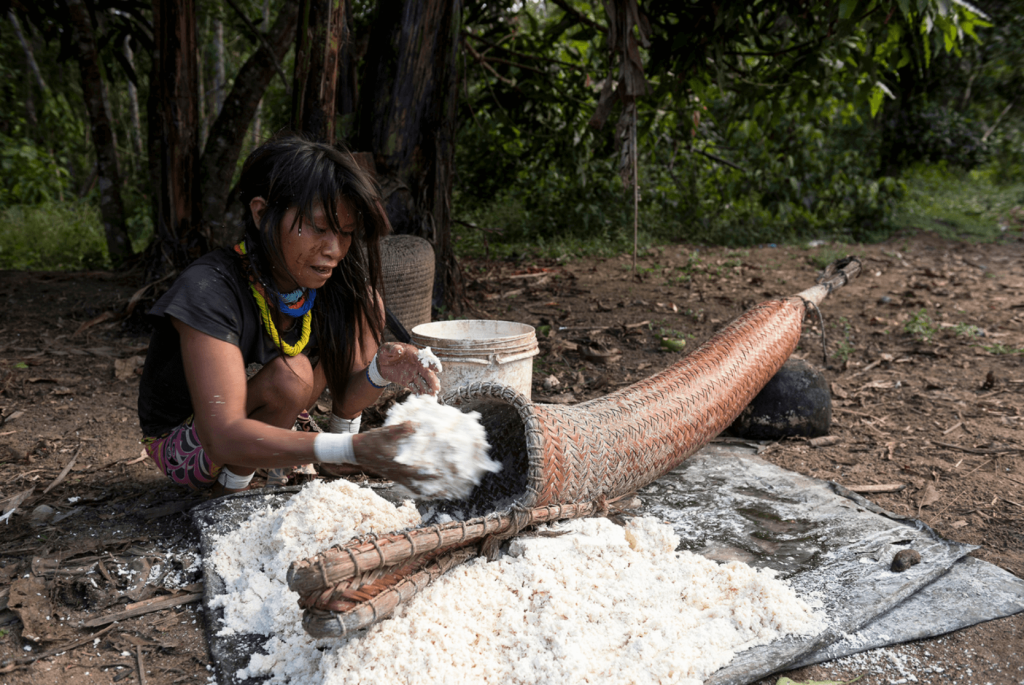SOCIOECONOMIC RELATIONS

Use of tipiti to process manioc by the Sanumá-Yanomami. Source: Sesai/Ministry of Health
In the context of the forest
Natural environment and sense of community define sustainable productive activities and guarantee forest preservation
The economic typology of indigenous societies differs from other non-indigenous societies in that they are subordinated to social relations, that is, it is the bonds within the context of indigenous sociability that regulate the production process and not only material necessity and much less market necessity. Therefore, the form of circulation of goods are variants of forms of exchange or barter in different proportions and with different functions according to the nature of the relations established. The mode of production, such as hunting, fishing, vegetal extraction, and small farming activities, are provided by the territory’s natural environment, with rare surplus production for commercialization. In any case, it can be said that the indigenous peoples make sustainable use of their territories of occupation, which helps to explain the immense vegetation cover conserved in the Amazon.
However, many Amazonian indigenous peoples also participate in economic relations with non-indigenous societies. For example, mining or oil exploration, important economic activities in the regions studied, generate exchanges of services, food, trade, and transportation for some communities. Tourism and the sale of forest products in natura, such as bananas, or processed products, such as flour, are also sources of local income, among others, for many communities.
On the other hand, the indigenous population is on the margins of the economic processes that integrate the Amazon into the global market, which occurs through trade in natural resources and high dependence on the fluctuating prices of commodities. The studies on borders have indicated that in all Amazonian countries, for example, there are large investments, mainly foreign, dedicated to extractive industry activities. When indigenous communities are inserted into these macroeconomic processes, this happens through the provision of services by the exploiting company to the affected indigenous community, as is the case of the oil industry in the Yasuní Park and the services provided to the Waorani people.
MAPA INTERATIVO
Observe no mapa interativo do Módulo Povos Indígenas, onde se localizam os territórios indígenas na região amazônica e observe as regiões fronteiriças estudadas pelos consultores da OTCA:
